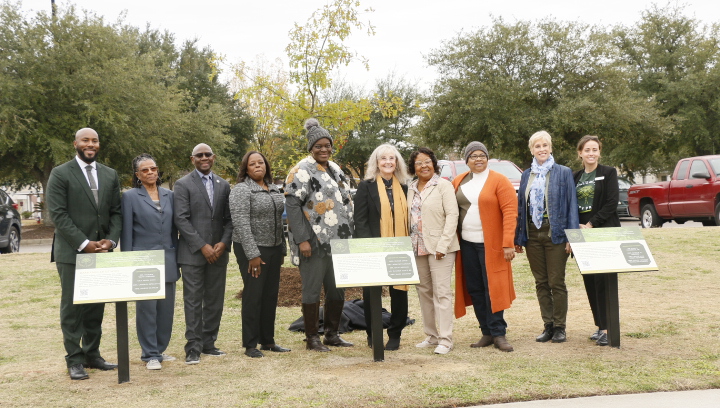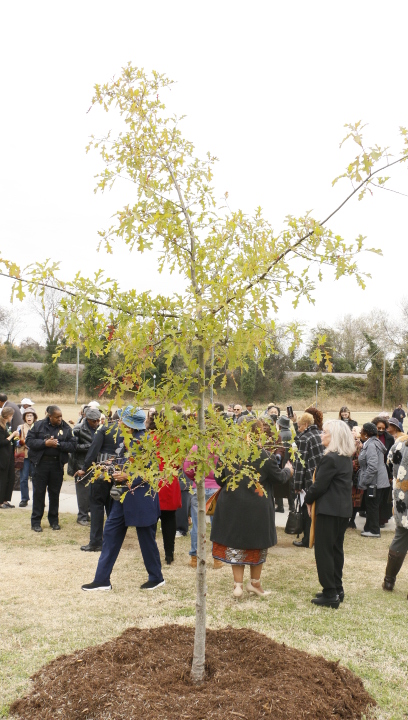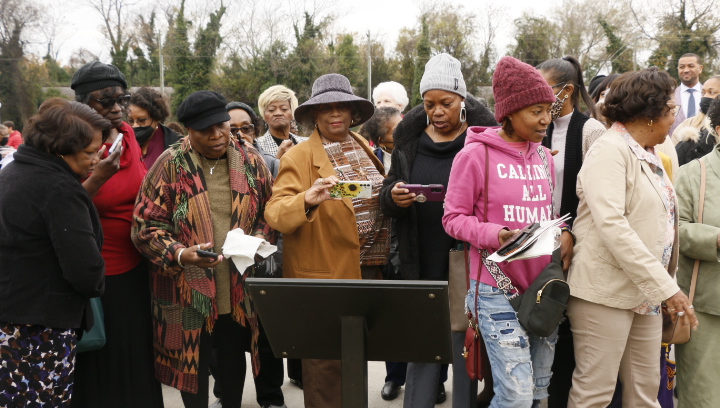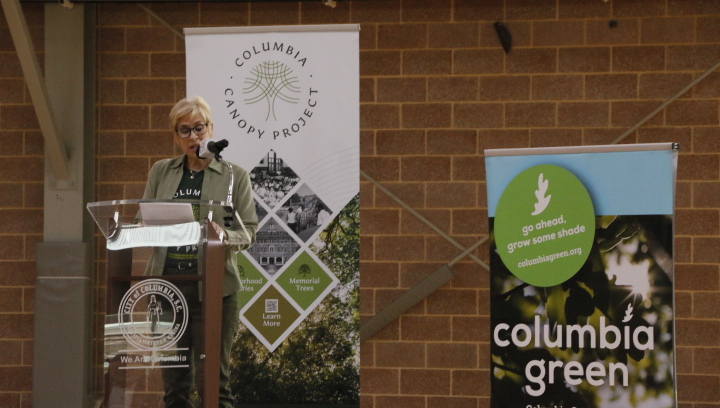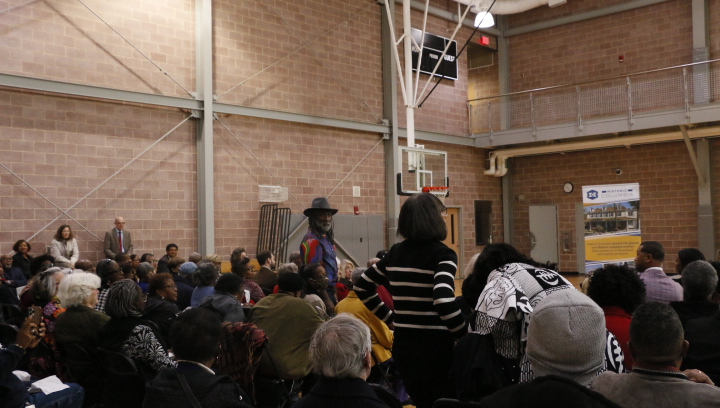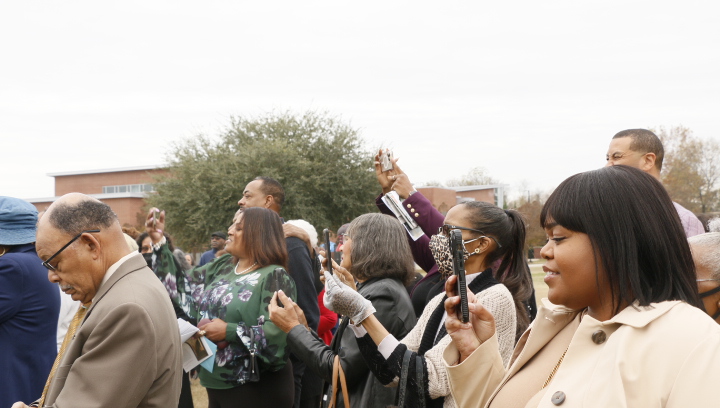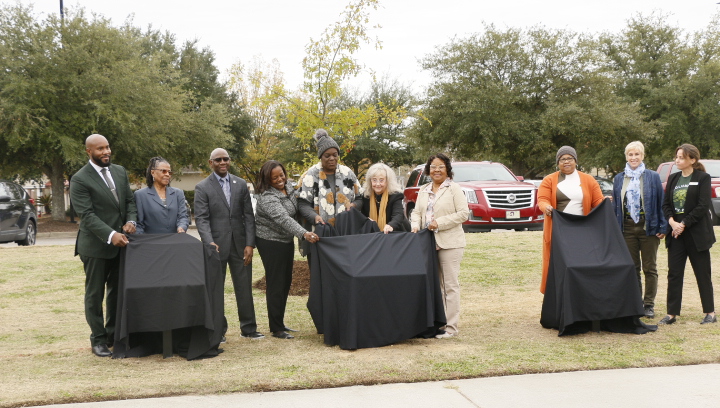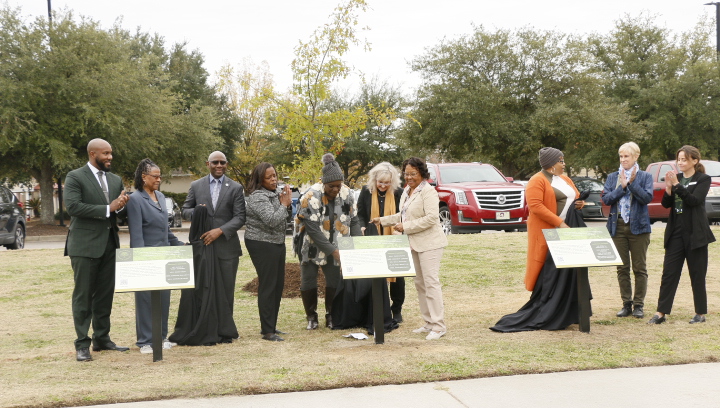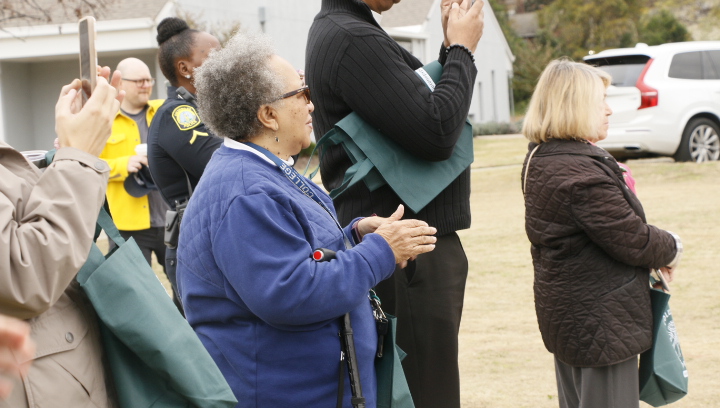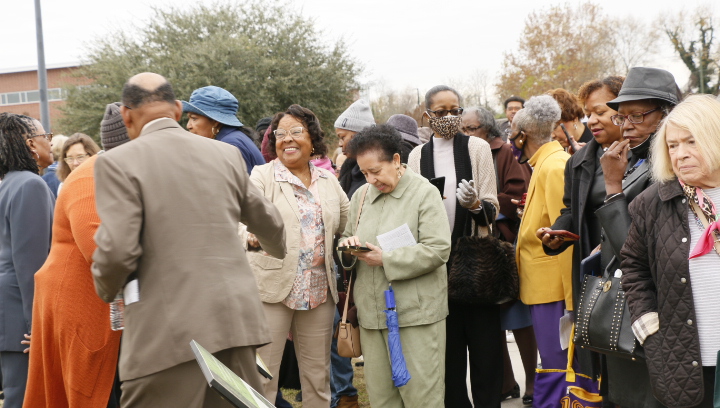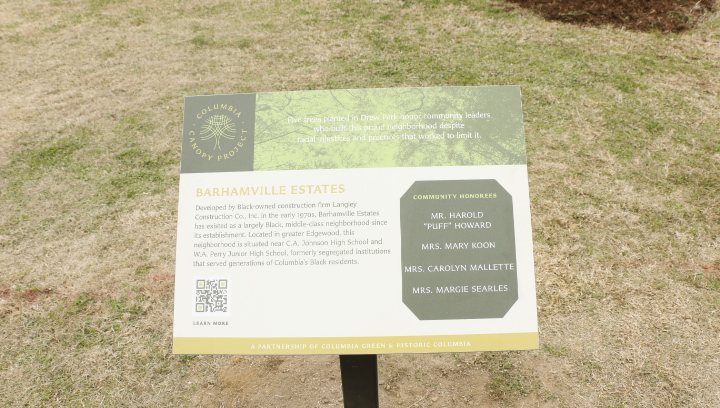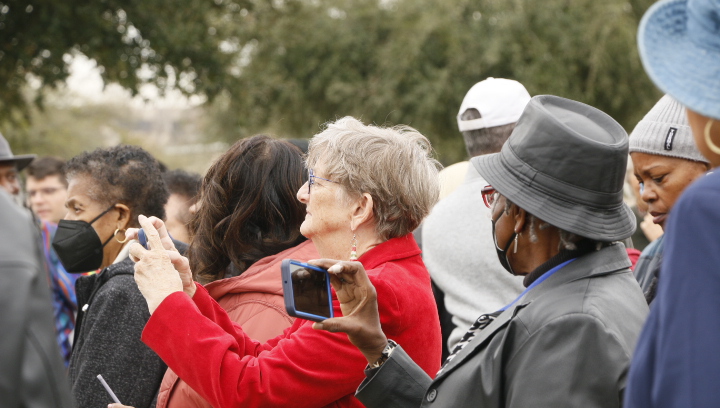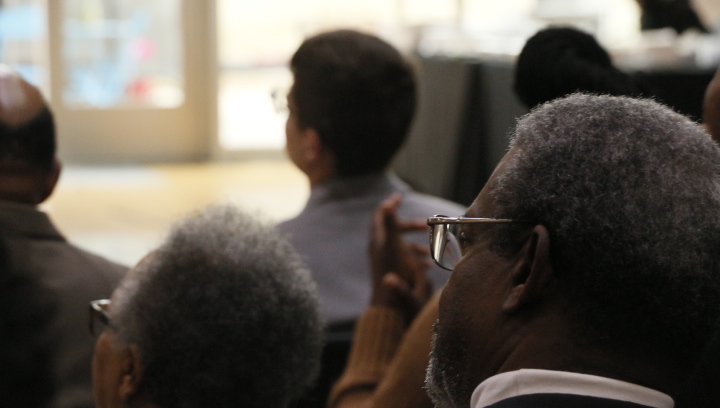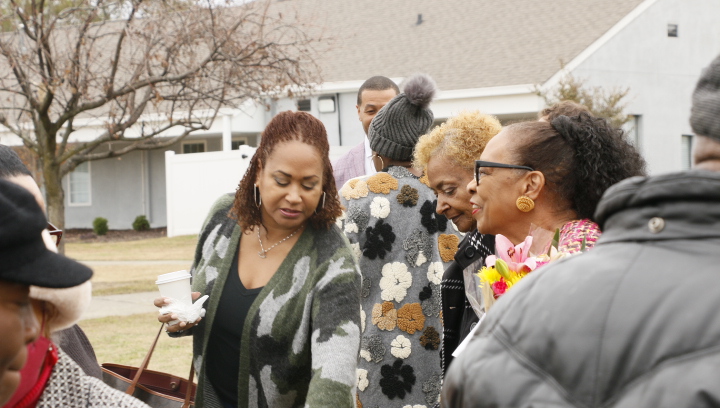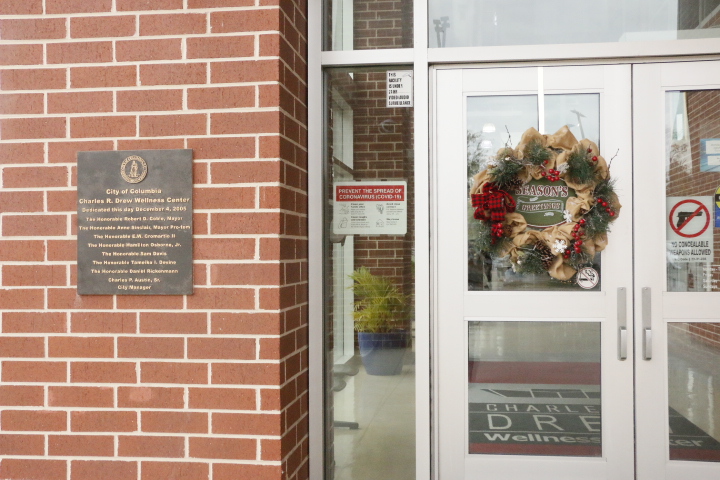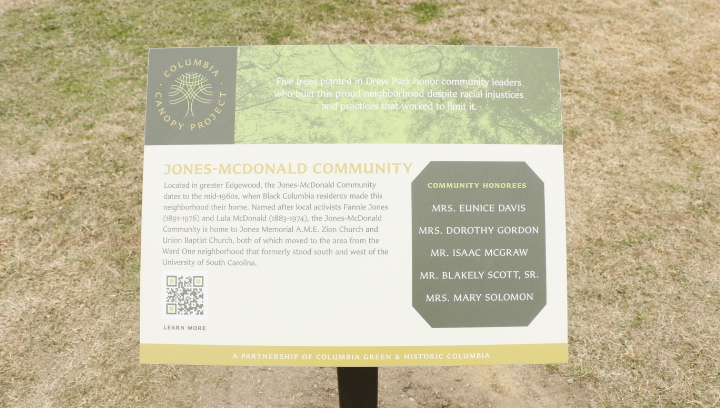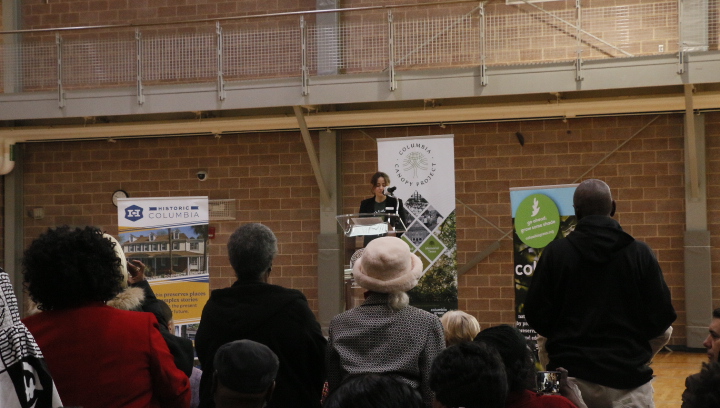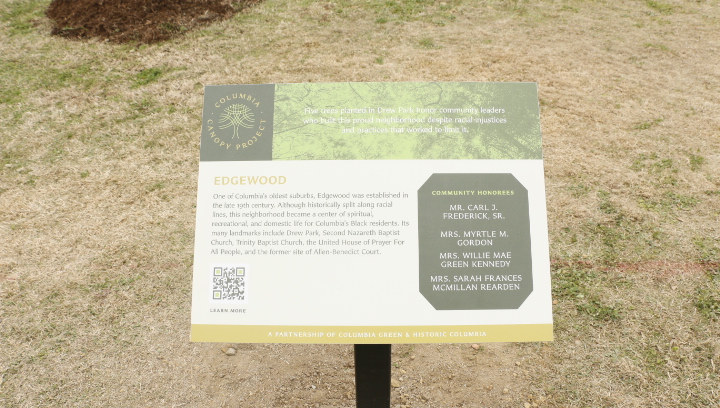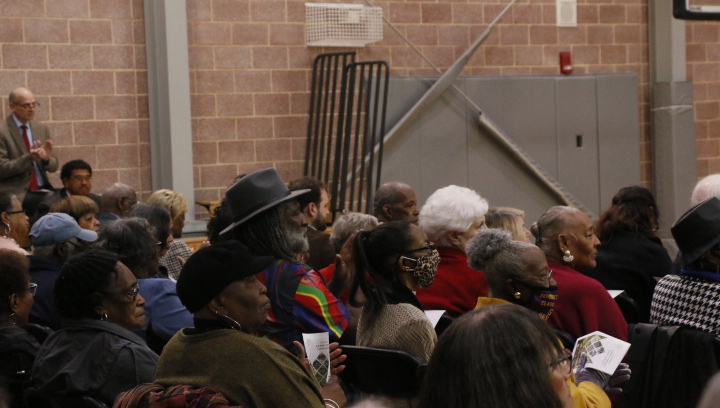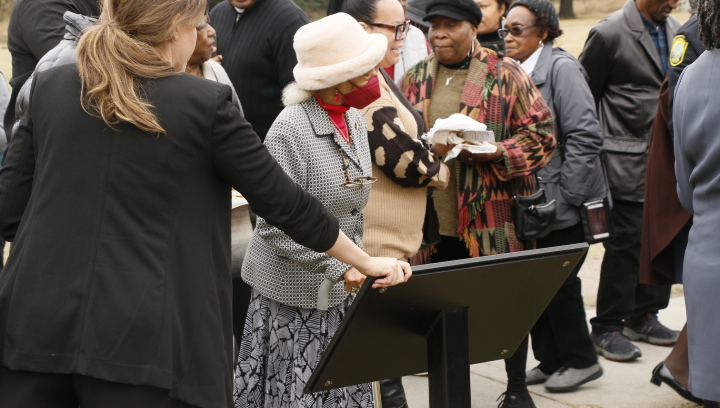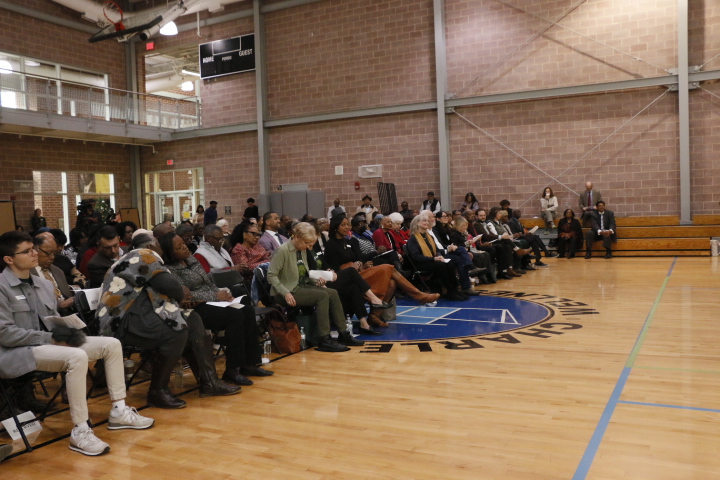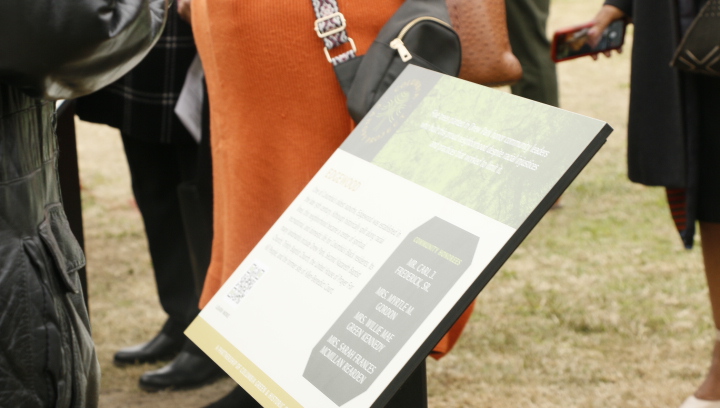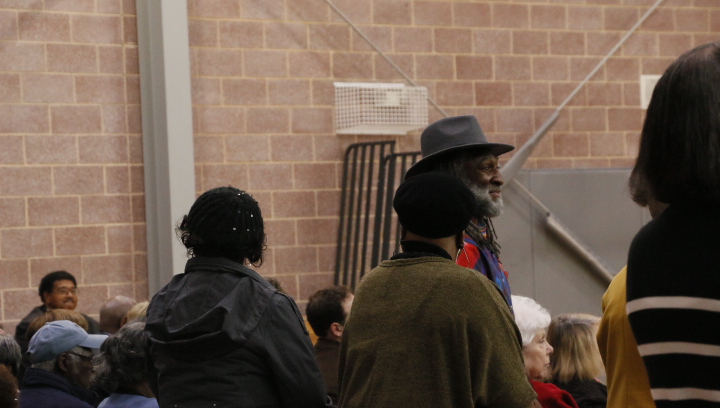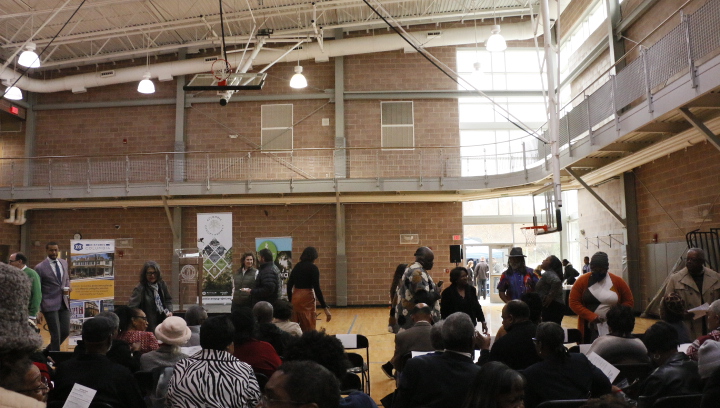Members involved in the Columbia Canopy Project unveil new community signs and trees planted. (Photos by Madeline Hager/Carolina News & Reporter)
A tree can mean everything to a neighborhood.
That’s why Historic Columbia and Green Columbia are collaborating to bring a new project to 23 marginalized communities.
The Columbia Canopy Project is planting trees to provide shade in neighborhoods, in parks and near sidewalks. It’s also erecting historical signage detailing overlooked heroes from these areas.
More than 150 people attended the unveiling of the first round of historical signs and newly planted trees at the city’s Drew Wellness Center on last week’s Arbor Day.
“Shade is so important, and people don’t realize it until there isn’t any,” said Kat Allen, Historic Columbia’s director of outreach and engagement.
Allen said the project was created to address the impact of redlining in Columbia communities.
The Merriam-Webster dictionary defines redlining as withholding home-loans or insurance in neighborhoods considered a poor financial risk.
“Redlining is remembered as the mechanism by which the federal government’s real estate professionals and private leaders ensured that minorities, in particular, Black Americans, could not achieve economic parity with their white counterparts,” Allen said. “This form of structural racism has had an outsized impact on our communities, one that can be seen to this day.”
The three historical signs show the parts of history left out of these communities, she said.
“Many of them have never had published research in their entire history, so they have a lot of community leaders that have been passing down history via oral tradition,” Allen said. “What we are here to be is a resource. So we go into the communities, and we say, ‘What stories do you want to tell?’”
Sabrina Odam-Edwards, the liaison for the neighborhoods, talked to people in the communities to uncover their history, which is being displayed on the signs.
“Their children, and their children after that, can read about all these unsung heroes, the people that pull themselves together to take care of their neighborhoods,” Odam-Edwards said. “So not only are we planting trees, but we are also planting history for the generations to come.”
Odam-Edwards has had firsthand experience with the lack of shade, saying she has had to leave parks because of heat and lack of shade.
“A grandmother like me who comes and brings the grandkids, who wants to stay forever in the park, we have a bench, but there are no trees around,” Odam-Edwards said.
A recent heat mapping of Columbia showed that the neighborhoods involved in the Canopy Project have less tree coverage, said Trace Ballou, a past president of Green Columbia.
“Parks and public spaces are just too hot to use during the long summer days,” Ballou said.
The Columbia Canopy project has planted 175 large shade trees so far.
Odam-Edwards said the trees will hopefully create healthier people in the communities.
“We have health disadvantages,” Odam-Edwards said. “… I think people would walk more if trees and shade were around. And that’s what stopped the people from coming out and enjoying the outside because we do not have enough shade.”
While the trees are new and small, they are expected to grow between 50 to 70 feet tall, Allen said.
The historic signs are meant to last a long time and come with a QR code so people can read more about the histories of the neighborhoods.
“As we know more about the community and update those community histories, it’s always one click away,” Allen said.
Columbia City Councilwoman Tina Herbert said she’s proud to be from Columbia and wants to see how the information about community heroes effects the youth in these communities.
“This provides an opportunity for young people to see what regular, ordinary, everyday people do,” Herbert said. “And then they can do that, too.”
The Canopy Project planted a tree outside the Charles R. Drew Wellness Center on Harden Street.
Event attendees take pictures of the new signs that highlight the history and heroes in Columbia’s communities.
Trace Ballou, past president of Green Columbia, speaks on the Canopy Project.
Community liaisons, who helped curate the history of the neighborhoods, stand to be recognized.

